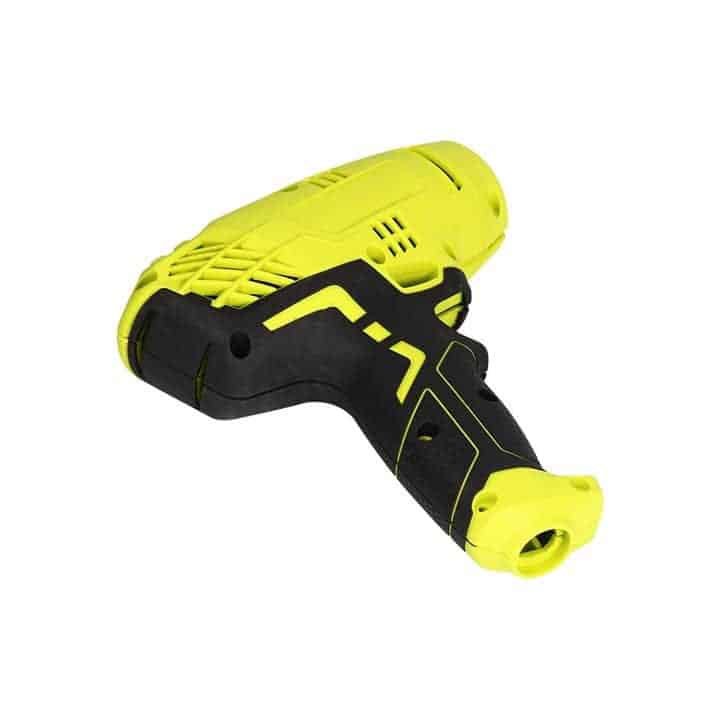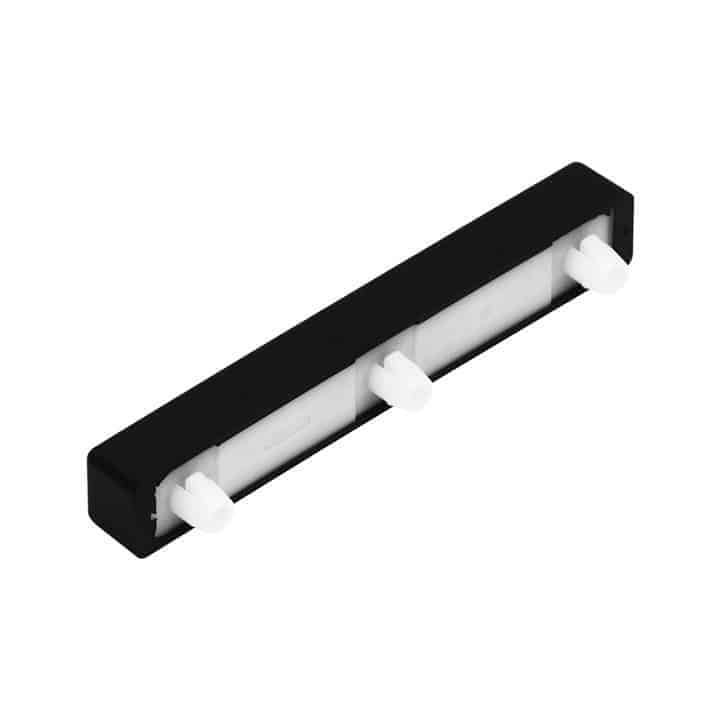In our lives, many products use encapsulated molds, such as toothbrushes, handles, mice, buttons, car buttons, etc., which are composed of two or more materials. Hard plastic encapsulating soft plastic is rare, while soft plastic encapsulating hard plastic is more commonly used for products that come into contact with the hands. Hard plastic encapsulating hard plastic is more commonly used for high-precision products.

1. Two-step injection molding
The semi-finished products produced by ordinary injection molding machines are processed and then manually placed into another set of molds for injection molding. The final product is obtained. The equipment requirements can be met by ordinary injection molding machines, so it is also a common practice in factories. It is also known as a set-up mold.
1) During the second injection molding, the mold needs to be designed with a clamping position and a clearance position for the product to be placed in the designated location more quickly and accurately, avoiding the occurrence of mold pressure.
2) When designing the mold, the product only undergoes shrinkage testing for the first mock examination, as it has already been shrunk to its actual size when it is taken out and placed in the second mock examination. Therefore, the second mock examination does not undergo shrinkage testing. The dimensional tolerance can only be accurately measured for the first mock examination, while the dimensional tolerance requirements for the second mock examination are usually not very high due to the soft appearance of the product surface.
2. Two-color injection molding machine
The two sets of molds opened are installed on the two-color machine or soft and hard rubber are opened on one set of mold, and the two materials are injected simultaneously in the same mold. Usually, the two-color machine has at least two barrels. After the injection is completed, the rear mold indexing disk rotates 180 degrees and performs secondary injection to finally obtain the desired product.
(Two-color molds can be integrated two-color molds and split two-color molds, both of which are installed in two-color machines for production. Their principles are the same, but there are differences in mold processing.)

Split two-color mold: two sets of molds need to be opened, and the mold frame sizes of the two sets of molds are the same. The rear mold parts are the same, while the front mold parts are different. During installation, it is necessary to ensure that the two sets of molds are at the same height and cannot be offset in position.
Integrated Two-Color Mold: In contrast with split two-color molds, an integrated two-color mold combines pouring and ejection systems within one mold; yet each needs to function separately from one another. That is to say, rear mold parts remain identical while front parts differ significantly due to two positioning rings and ejection mechanisms on front mold parts compared with their respective rear counterparts; installing this integrated mold also takes less time as only one mold needs opening for processing costs to decrease significantly and one less mold needs being installed during installation process than split two-color mold installations!
1) Unlike two-step injection molding, when transitioning from one-shot molding to two-shot molding, there’s no need to remove the product. Therefore, during design, both sets of molds are scaled to accommodate the water, and the dimensional tolerance is based on the first mold’s dimensional tolerance.
2) The number of two-color molds in the factory is limited. When scheduling production, it is necessary to determine whether the machine meets the molding requirements of the product, based on the measurement of the molding machine, the size of the two-color machine’s turntable, and the tonnage size.
3) The product structure of the two-color mold is relatively simple, and the structure of the ram and slider should be minimized to ensure the safe use and stability of the mold during operation of the two-color machine.
4) Using the two-color mold produced by the two-color machine as a benchmark, the guide post cannot be like the guide post of a normal mold, where the reference angle of the guide post is offset by 2.00mm towards the center position. Otherwise, during operation of the two-color machine, the guide post and guide sleeve will collide and fail to close the mold.
